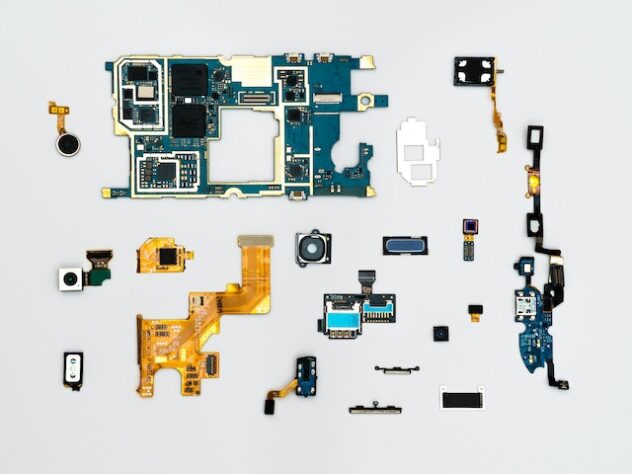Tech Used In Business That You Didn’t Know Existed
Technology is constantly changing and evolving, but how much do you know about the tech secrets that lie beneath the surface of the business world?
It’s easy to get caught up in the latest trends and tools, but there are so many more technologies out there that are not as widely discussed. From artificial intelligence to blockchain, there is a world of tech secrets to be discovered.
In this article, we’ll take you on a journey to uncover the hidden tech secrets of business and expose the technologies you might never have known existed. You’ll learn about the different types of tech tools, the ways they can be used, and the potential benefits they can bring to your business. So, get ready to dive in and explore the fascinating world of tech secrets!

Artificial Intelligence and Its Benefits
Artificial intelligence (AI) is one of the most powerful technologies of the present day. It is the capacity of machines to imitate human behaviour and make decisions based on data and algorithms. AI has been used in various industries, such as retail, financial trading, healthcare, software development, and manufacturing. AI has the potential to make businesses more efficient, reduce costs, and improve customer service.
For example, AI can be used to automate customer service tasks such as responding to customer inquiries and providing personalized customer service. AI can also be used for predictive analytics, which can help businesses anticipate customer needs and provide better customer care. AI can even be used for marketing automation, which can automate the process of creating, managing, and optimizing campaigns.
AI can also help businesses improve their operations. For example, AI can be used to automate mundane tasks such as data entry and record-keeping, which can make businesses more efficient. It can identify trends and patterns in customer data and also help automate financial processes, such as accounting and auditing.
Blockchain and Its Impact on Businesses
Blockchain is a distributed ledger technology that enables secure digital records of transactions to be stored and shared across multiple networks. It is a powerful technology that has the potential to revolutionize the way businesses operate.
One of the main advantages of blockchain is its decentralized nature. By using blockchain, businesses can store and share data without relying on a central authority. This eliminates the need for third-party intermediaries and makes transactions more secure. Additionally, blockchain can help businesses reduce costs by eliminating the need for costly middlemen.
Furthermore, blockchain can be used to facilitate digital transactions. For example, it can be used to create and manage digital currencies, such as Bitcoin, which can be used for peer-to-peer transactions. Additionally, blockchain can be used to create digital tokens, which can be used to facilitate transactions and store value.
Finally, blockchain can be used to create distributed applications or Dapps. Dapps are decentralized applications that are built on top of blockchain technology. They are secure, transparent, and immutable, making them ideal for a variety of use cases.
Cloud Computing and Its Benefits
Cloud computing is a technology that enables businesses to store, manage, and process data on remote servers instead of on-site servers. It is a powerful technology that offers many benefits, including cost savings, scalability, and flexibility.
One of the main benefits of cloud computing is cost savings. By using cloud computing, businesses can reduce their IT costs by eliminating the need to purchase, maintain, and upgrade on-site servers. Additionally, cloud computing can help businesses save money by eliminating the need to hire IT staff. Cloud computing can also help businesses scale their operations. By leveraging the power of the cloud, businesses can quickly and easily scale up or down depending on their needs. This makes it easier for businesses to respond to changing market conditions and customer demands. Lastly, by using cloud-based security solutions, businesses can protect their data from cyber threats. Cloud-based solutions can be updated regularly to ensure they remain secure.
Augmented Reality and its Applications
Augmented reality (AR) is a technology that allows users to interact with digital information in a physical environment. It is a powerful technology that has the potential to revolutionize the way businesses interact with customers.
One of the main benefits of AR is that it can help businesses create engaging, interactive experiences for customers. For example, AR can be used to create interactive 3D product displays, which can help customers visualize products before they buy them. Additionally, AR can be used to create interactive customer service experiences, such as virtual try-on services.
Furthermore, AR can be used to create immersive training and education experiences. For example, AR can be used to create virtual tours of products, which can help customers learn about products before they buy them. Additionally, AR can be used to create interactive tutorials, which can help users learn how to use products and services.
Predictive Analytics and its Advantages
Predictive analytics is a technology that uses data and algorithms to predict future outcomes. It is a powerful technology that has the potential to revolutionize the way businesses make decisions.
One of the main benefits of predictive analytics is that it can help businesses identify trends and patterns in customer data. By leveraging predictive analytics, businesses can anticipate customer needs and preferences and tailor their products and services accordingly.
Furthermore, predictive analytics can help businesses improve their marketing campaigns. For example, predictive analytics can be used to identify customer segments and target customers with personalized campaigns. This can help businesses increase customer engagement and conversion rates.
Additionally, predictive analytics can be used in retail to optimize pricing and inventory management. For example, predictive analytics can be used to predict customer demand and optimize pricing and inventory levels accordingly. This can help businesses maximize profits and reduce costs.
Finally, predictive analytics can be used to identify risks and opportunities. For example, predictive analytics can be used to identify potential risks and opportunities in the marketplace. This can help businesses make better decisions and stay ahead of the competition.
The Potential of Big Data
Big data is a term used to describe large amounts of data that can be analyzed to uncover hidden insights. It is a powerful technology that has the potential to revolutionize the way businesses operate.
One of the main benefits of big data is that it can help businesses make better decisions. By collecting and analyzing large amounts of data, businesses can identify trends and patterns, which helps them make more informed decisions. Additionally, big data can be used to create predictive models, which can help businesses anticipate customer needs. More and more businesses are utilizing web data extraction tools to build out large datasets.
Conclusion
As you can see, businesses are constantly finding new ways to utilize technology and become more competitive in their respective markets. With the help of new advances in AI, blockchain, cloud computing, AR, predictive analysis, big data, and more, organizations can make the most of every dollar and every second. If you’re a business owner committed to growing your company, a good place to start is investing in new technology.


